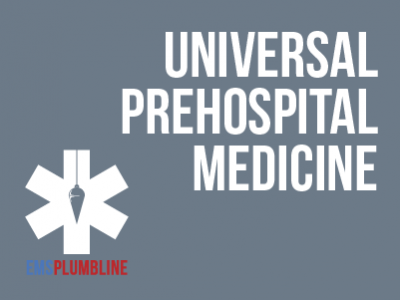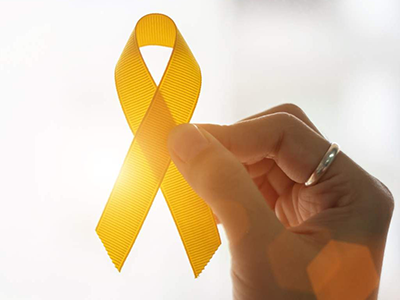 |
Lifting and Moving—Lesson 1 |
0.50 |
There are several disciplines of healthcare that require proficiency in lifting and moving. Prehosital medicine and fire-service-related rescue requires a proficiency in this area that is beyond any other area of healthcare. Our team of experts discuss the challenges that we face in our community. In this first session of the series, we explore the mindset and preparation that must take place in order to achieve success.
Final Exam:This multiple choice exam is designed to test your knowledge of the material you just reviewed. You have two attempts to gain a 70% or higher on this exam. Please take your time and answer each question carefully. |
 |
Lifting and Moving—Lesson 2 |
0.50 |
In the second session, we will discuss body mechanics and what you can do to properly train to perform in a safe manner. Final Exam: This multiple choice exam is designed to test your knowledge of the material you just reviewed. You have two attempts to gain an 80% or higher on this exam. Please take your time and answer each question carefully.
|
 |
Light-Footed Clapper Rails: A Successful Ex-Situ Conservation Program |
1.00 |
This webinar provides a detailed overview of the collaborative efforts of different organizations to save this highly endangered bird species. It will enable participants to understand the process involved in setting up a captive breeding and release program for a very elusive bird. |
 |
Lightning Safety Awareness |
0.50 |
This course covers the basics of lightning, lightning injury prevention, and how to help lightning strike victims. |
 |
Lions |
2.00 |
This course explores the natural history of lions along with current conservation efforts. You’ll learn about the lion’s physical characteristics, habitat, behavior, reproduction, and who is working to protect these animals. |
 |
Literacy Strategies for Teachers |
1.00 |
This course empowers educators with a solid foundation in literacy development and a rich repertoire of strategies to support their students in becoming confident, skilled readers and writers. It is just one of many education courses we offer. Teachers will develop new knowledge about fostering a love for literacy, differentiating instruction, and addressing the diverse needs of students in their classrooms. |
 |
Lithium-Ion Battery - INTRODUCTION |
1.50 |
This introductory course is an awareness-level presentation that educates firefighters on the impact of lithium-ion batteries on fire service operations. The course defines the lithium-ion battery, describes the chemistry of the battery, and identifies the applications using this technology. The lessons of this course assess the hazards of the lithium-ion battery, evaluate the associated risk, and identify operational mitigations to reduce firefighter risk exposure when encountering fires related to this technology. |
 |
Lockout-Tagout: Control of Hazardous Energy |
0.50 |
This course covers the procedures of Lockout-Tagout. You will learn what Lockout-Tagout is, when to apply it, as well as the process that goes along with it. |
 |
Los beneficios de conectar a personas mayores y niños pequeños (CDA 3) (Spanish) Benefits of Connecting Seniors and Young Children (CDA 3) |
1.00 |
Este curso se enfoca en involucrar a adultos mayores en programas de educación y cuidado infantil. Descubra los beneficios para los niños, los adultos mayores, su programa y para usted cuando participan personas mayores.
This course focuses on involving senior adults in child care and education programs. Discover the benefits to the children, senior adults, your program, and you when seniors are involved. |
 |
Machine Guarding and Amputation Hazards |
1.00 |
This course covers the sources of amputation hazards as well as the possible protection methods against them. Different machine guarding for various types of machines and tools will also be discussed. |
 |
Machinery and Vehicular Safety |
1.00 |
This course covers how to safely operate machinery and work vehicles. You will learn about the hazards of vehicles and machinery. You will also learn about precautions you should take while operating vehicles and machinery and how to protect yourself. |
 |
Making Educators Partners in Suicide Prevention |
0.75 |
This course covers Making Educators Partners in Suicide Prevention. It is just one of many educational courses we offer. This course will help you develop new knowledge about children and help you better understand your role. This course will give you a broad overview of suicide statistics and the disparities that come with it. It will then give you an understanding of what educational professionals can do to help their students who are at risk and provide you with strategies recommended by the CDC. |
 |
Making Plans and Developing Policies |
2.00 |
Planning and policy-making are closely linked to the development of quality school-age care programs. When school-age staff are skilled as planners and policy-makers, they can use these skills to design and implement high quality programs that benefit children, youth, and families. It is essential for school-age care professionals to recognize that it is important for policies to grow out of a vision of quality, and a mission that supports that vision. Therefore, creating a vision for quality, developing a program philosophy, and writing a clear mission statement are the first steps in program planning. It is also important for school-age care professionals to use a systematic process to develop goals and objectives, set priorities for accomplishing goals and objectives, and develop goal-based action plans that will help the school-age program achieve its mission. High quality school-age programs are led by professionals who understand how to use effective strategies for creating a continuous cycle of planning and evaluation that supports ongoing program improvement. |
 |
Making Your Home A Safer Place |
0.75 |
This course covers household safety. This includes fire and kitchen safety, emergencies, infant safety, and more. This course will help you learn about the best practices for everyone inside the house, from infants to pets. It is just one of the many health and safety courses we offer. |
 |
Mammals |
4.50 |
This series of five modules provides you with a greater understanding of the wide range of the types of mammals and some of their remarkable adaptations, enabling you to be a better interpreter, animal care professional, volunteer, or simply a better informed individual. Information includes an overview of physical characteristics, habitat, behavior, reproduction, and the conservation efforts dedicated to protecting this taxonomic group. Individual modules allow for a more focused approach to the material, as each takes a narrow scope. Each module includes self-assessment opportunities and its own mastery test. |
 |
Management of Effective Preschool Child Care Environments (CDA 1) |
2.00 |
Unlocking preschool potential through nurturing environments: This course equips you with the knowledge and skills to create spaces that ignite young minds and support healthy development. Explore how to design engaging, child-centered environments and routines that adapt to individual needs, cultural influences, and developmental milestones. Learn to assess your current preschool environment and craft targeted strategies for improvement, fostering a dynamic learning space where every child thrives. |
 |
Managerial Leadership: Coping Through a Change Process |
1.00 |
Whether your employees perceive change as positive or negative, you might encounter an emotional response from them. They will have many questions regarding their roles, competencies, and, possibly, even their futures. Your employees might feel they are being forced out of a comfort zone, and they might experience a loss of familiarity. Typical responses during a change include feelings of doubt, anxiety, fear, and anger. Sometimes, changes in the workplace can trigger a severe emotional response.
In this course you will learn to: respond to distress and reduce stress, and succeed through failure and deal with mistakes. |
 |
Managerial Leadership: Coping Through a Change Process (Instructor Guide) |
1.00 |
Whether your employees perceive change as positive or negative, you might encounter an emotional response from them. They will have many questions regarding their roles, competencies, and, possibly, even their futures. Your employees might feel they are being forced out of a comfort zone, and they might experience a loss of familiarity. Typical responses during a change include feelings of doubt, anxiety, fear, and anger. Sometimes, changes in the workplace can trigger a severe emotional response.
In this course you will learn to: respond to distress and reduce stress, and succeed through failure and deal with mistakes.
This Instructor's Edition of this course includes notes and suggestions to assist you in presenting the material, whether in an in-person classroom setting or as an instructor-led online or distance-learning course. It also provides you with the answers to questions found in mid-lesson activities, as well as in the quiz that concludes the course. |
 |
Managerial Leadership: Defining Employee Roles and Priorities |
1.50 |
A vision is created by an organization to inspire its members to work together to reach for an ideal of what the organization can become. The members of the organization should use the vision as the standard to determine the day-to-day functions of their individual roles. The vision is the guide to use every time an action is taken, a decision is made, or a plan is developed to improve the organization or the people in it. An organization’s vision should enable the members in every role to do what is in the best interest of the organization.
In this course you will learn to: determine leader roles and strengthen employee roles, and align employee priorities and evaluate employee performance. |
 |
Managerial Leadership: Defining Employee Roles and Priorities (Instructor Guide) |
1.50 |
A vision is created by an organization to inspire its members to work together to reach for an ideal of what the organization can become. The members of the organization should use the vision as the standard to determine the day-to-day functions of their individual roles. The vision is the guide to use every time an action is taken, a decision is made, or a plan is developed to improve the organization or the people in it. An organization’s vision should enable the members in every role to do what is in the best interest of the organization.
In this course you will learn to: determine leader roles and strengthen employee roles, and align employee priorities and evaluate employee performance.
This Instructor's Edition of this course includes notes and suggestions to assist you in presenting the material, whether in an in-person classroom setting or as an instructor-led online or distance-learning course. It also provides you with the answers to questions found in mid-lesson activities, as well as in the quiz that concludes the course. |
 |
Managerial Leadership: Employing Motivational Strategies |
0.50 |
You need to use motivational strategies in your leadership to help your employees perform optimally, and to make them feel as though they are helping meet a need. When you motivate your employees to accomplish their goals, and give them the necessary feedback to optimize their performance, they feel they are helping meet the organization’s needs.
You, your employees, and your organization all benefit when you use motivation in leadership. You benefit because, through motivation, your work group will perform optimally. Your employees benefit because they experience job satisfaction and success in accomplishing their goals. Your organization benefits because its members are more committed to helping it be successful and grow.
In this course you will learn to: motivate employees and overcome employee apathy. |
 |
Managerial Leadership: Employing Motivational Strategies (Instructor Guide) |
0.50 |
You need to use motivational strategies in your leadership to help your employees perform optimally, and to make them feel as though they are helping meet a need. When you motivate your employees to accomplish their goals, and give them the necessary feedback to optimize their performance, they feel they are helping meet the organization’s needs.
You, your employees, and your organization all benefit when you use motivation in leadership. You benefit because, through motivation, your work group will perform optimally. Your employees benefit because they experience job satisfaction and success in accomplishing their goals. Your organization benefits because its members are more committed to helping it be successful and grow.
In this course you will learn to: motivate employees and overcome employee apathy.
This Instructor's Edition of this course includes notes and suggestions to assist you in presenting the material, whether in an in-person classroom setting or as an instructor-led online or distance-learning course. It also provides you with the answers to questions found in mid-lesson activities, as well as in the quiz that concludes the course. |
 |
Managerial Leadership: Leading with a Vision |
1.50 |
An organization does not generate itself—it is founded by one or more people who take the initiative to put an idea into action. Leadership is the cement that unites members of an organization to achieve a common end.
Leadership helps members of an organization understand the organization’s purpose, and makes sure they do not lose sight of the organization’s vision. If an organization functions ineffectively, leadership helps members cope with the changes needed to improve the organization, enabling fulfillment of the vision or goals.
Leadership also helps members of an organization work to their full potential. If a team has the ability and resources to complete a task, leadership can provide the motivation and inspiration the team needs to complete the task.
In this course you will learn to: Identify a leader, define the vision of an organization and write a vision statement, and relate goals to the vision statement. |
 |
Managerial Leadership: Leading with a Vision (Instructor Guide) |
1.50 |
An organization does not generate itself—it is founded by one or more people who take the initiative to put an idea into action. Leadership is the cement that unites members of an organization to achieve a common end.
Leadership helps members of an organization understand the organization’s purpose, and makes sure they do not lose sight of the organization’s vision. If an organization functions ineffectively, leadership helps members cope with the changes needed to improve the organization, enabling fulfillment of the vision or goals.
Leadership also helps members of an organization work to their full potential. If a team has the ability and resources to complete a task, leadership can provide the motivation and inspiration the team needs to complete the task.
In this course you will learn to: Identify a leader, define the vision of an organization and write a vision statement, and relate goals to the vision statement.
This Instructor's Edition of this course includes notes and suggestions to assist you in presenting the material, whether in an in-person classroom setting or as an instructor-led online or distance-learning course. It also provides you with the answers to questions found in mid-lesson activities, as well as in the quiz that concludes the course. |
 |
Managerial Leadership: Making Vision a Reality |
1.00 |
An organization’s vision must be communicated in a manner that inspires people to participate in fulfilling it. Before members of an organization work to their full potential, they must first understand what it is they are working for—to make the organization’s vision a reality.
It is through communication that a leader gains support for the organization’s vision. People will not commit to something blindly, nor should they be expected to commit without information. Therefore, when, how, and to whom an organization’s vision is communicated is of great importance to the successful fulfillment of the vision.
Your organization’s vision must be communicated to the people who’ll have a hand in fulfilling it, as well as to the people who’ll be affected by it, such as clients or investors. Your organization’s vision should also be communicated to potential employees, or other people in the community who come into contact with your organization.
In this course you will learn to: communicate the vision, gain support for the vision, and empower employees, and implement the organization’s vision. |


























